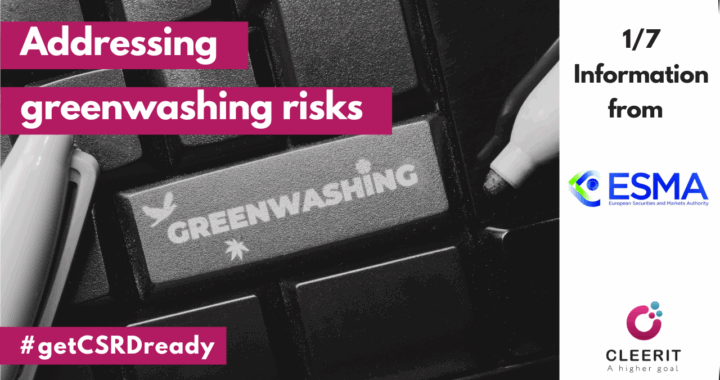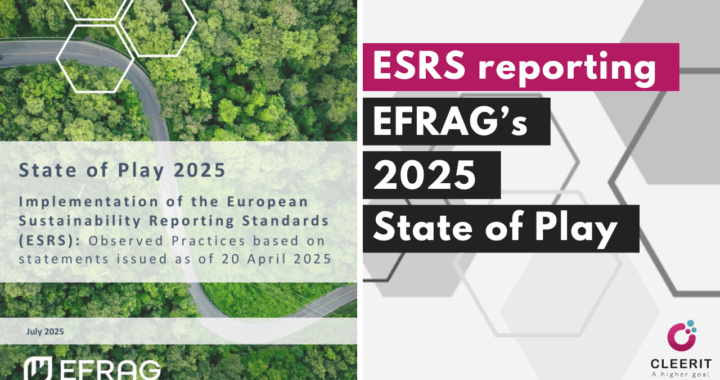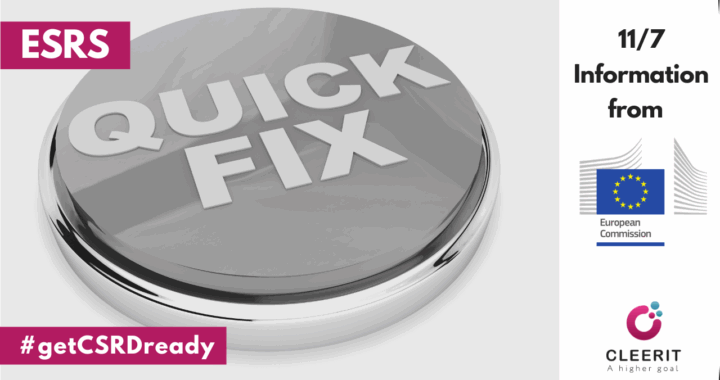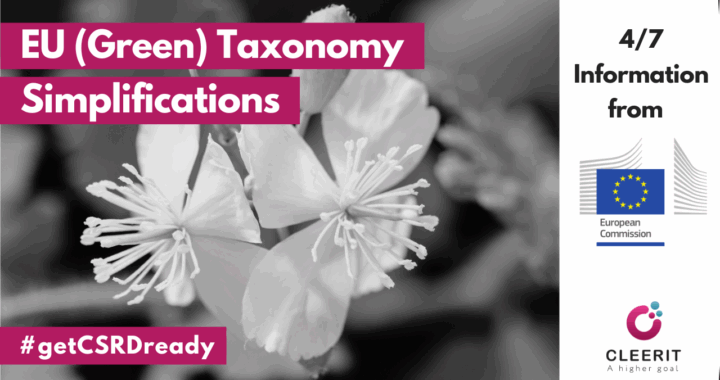En svensk översättning följer nedan.
The “EFRAG 2025 State of Play” report released yesterday 23/7, offers valuable key insights from 656 ESRS sustainability statements issued in 2025.
The report aims to inform preparers, regulators, and other stakeholders as Europe transitions to a more transparent and accountable sustainability reporting landscape.
It highlights that while many companies have taken significant steps, consistent and comparable reporting is still evolving.
In other words, we are still learning and improving.
Here are some of the key insights, in short:
The average length of sustainability statements is 115 pages, the median is 100, the longest statement has ~440 pages and the shortest ~25 pages. Only ~25% of preparers’ statements have fewer than 70 pages.
Southern EU countries (e.g., Spain and Italy) have longer statements, while Nordics (e.g., Sweden, Norway and Denmark) have shorter statements on average.
When engaging with preparers, the EFRAG Secretariat noted two factors that could potentially drive this trend:
- Cultural habits: preparers tend to align with average length of their financial statements; and
- Peer comparisons: northern EU preparers align with peers’ writing styles.
Data point-level disclosures vary extensively, e.g., content and use of tables and clear labelling of datapoints.
Clear and structured descriptions provided for each IRO facilitates understanding of their relevance and implications.
Nearly all preparers (97%) engage internal stakeholders (mainly employees) as part of their DMA, confirming the reliance of internal input, followed by other primarily business-related stakeholders such as Clients (~70%); Suppliers (~65%) and Investors (~60%). Engagement with broader societal stakeholders is less common.
Three topical standards are material for nearly all preparers: E1 (98%), S1 (99%) and G1 (93%).
Other frequently reported topical standards include: E5 (65%), S2 (63%) and S4 (68%).
Some are less frequently cited as material, such as E3 (33%) and S3 (30%).
Once again, the regional patterns continue, with Southern EU countries reporting more material topical standards than Nordic peers (e.g., Spain: 7, France: 7, Italy: 7 vs. Norway: 6, Finland: 6, Denmark: 6).
55% of preparers claim to have a Transition plan for climate change mitigation (CTP), but clear disclosure of all the CTP elements (as per draft IG4) is not yet highly detailed and standardized across preparers, hindering comparability. Only a few preparers fully explain the CTP components outlined in draft IG4, indicating a gap between formal declaration and meaningful disclosure.
Adoption of Transition plan for climate change mitigations is higher in Northern and Western Europe (e.g., Netherlands: 73%, Sweden: 69%, Denmark: 69%).
While ~70% of preparers commit to limiting warming to below 1.5°C for their Scope 1 & 2 emissions, only ~40% of these extend this target to include Scope 3 emissions.
60% of preparers reported that their climate targets have been validated by SBTi (Science-Based Targets Initiative)
Only ~30% of preparers across all sectors report biodiversity metrics, among those, the amount of metrics disclosed on average is low (~4 metrics each).
Disclosure is higher in France (49%), Sweden (44%), Austria (44%), and the Netherlands (39%) and lower uptake observed in Italy (18%) and Germany (23%).
S1: Most preparers declare providing adequate wages, but with limited contextual information provided. While most preparers still present Health & Safety policies separately from their actions and performance data, some preparers have started to link policies with actions and metrics and outcomes clearly.
S2: While many preparers still report human rights policies regarding their Value Chain at a high level, some are starting to operationalise them through supplier actions, ESG onboarding, and grievance mechanisms to enable consistent oversight
S3: The affected communities disclosures demonstrate a growing effort to track and communicate social value creation, particularly through impact-focused initiatives linked to partnerships, or core business.
S4: Consumer impact disclosures often reflect reputational priorities, emphasising purpose-led branding, consumer trust, or themes related to well-being.
You can download the full report and access EFRAG’s portal here:
https://www.efrag.org/en/news-and-calendar/news/efrag-launches-esrs-statistics-and-report-portal-on-the-2025issued-esrs-sustainability-statements?ct=AAAAAhQFEQFzFAIGABEFZW1haWwGAQgI9BEBZQgI9BECc3QRFjY4ODBlMjdiNzVhNGI3NDE1Nzk5MTARAWwRBTU2OTY1EQFjFAEOAggI9A%253D%253D
Stay tuned for more CSRD, ESRS and VSME insights on our LinkedIn page >>
—SVENSK ÖVERSÄTTNING—
Rapporten “EFRAG 2025 State of Play” som släpptes igår, 23/7, erbjuder värdefulla insikter från 656 ESRS-hållbarhetsrapporter som utfärdades under 2025.
Rapporten syftar till att informera företag, tillsynsmyndigheter och andra intressenter i takt med att Europa övergår till ett mer transparent och ansvarsfullt hållbarhetsrapporteringslandskap.
Den belyser att även om många företag har tagit betydande steg, så utvecklas konsekvent och jämförbar rapportering fortfarande.
Med andra ord, vi lär oss fortfarande och förbättrar.
Här är några av de viktigaste insikterna, i korthet, översatta till svenska av Cleerit (inofficiell översättning):
Den genomsnittliga längden på hållbarhetsrapporter är 115 sidor, medianen är 100, den längsta rapporten har ~440 sidor och den kortaste ~25 sidor. Endast ~25 % av rapporterna har färre än 70 sidor.
Länder i södra EU (t.ex. Spanien och Italien) har längre rapporter, medan de nordiska länderna (t.ex. Sverige, Norge och Danmark) har kortare rapporter i genomsnitt.
Vid utbyte av information med de som förberett rapporterna noterade EFRAG-sekretariatet två faktorer som potentiellt skulle kunna driva denna trend:
- Kulturella vanor: företag tenderar att anpassa sig till den genomsnittliga längden på sina finansiella rapporter; och
- Jämförelser med liknande bolag: företag i norra EU anpassar sig till liknande bolags sätt att skriva.
Upplysningar på datapunktsnivå varierar kraftigt, t.ex. innehåll och användning av tabeller och tydlig märkning av datapunkter.
Tydliga och strukturerade beskrivningar för varje IRO underlättar förståelsen av deras relevans och konsekvenser.
Nästan alla företag (97 %) engagerar interna intressenter (främst anställda) som en del av sin väsentlighetsanalys, vilket bekräftar att man förlitar sig på intern input.
Därefter följer andra främst affärsrelaterade intressenter, såsom kunder (~70 %); leverantörer (~65 %) och investerare (~60 %).
Dialoger med bredare samhällsintressenter är mindre vanligt.
Tre ämnesstandarder är väsentliga för nästan alla företag: E1 (98 %), S1 (99 %) och G1 (93 %).
Andra ofta rapporterade standarder inkluderar: E5 (65 %), S2 (63 %) och S4 (68 %).
Vissa citeras mindre ofta som väsentliga, såsom E3 (33 %) och S3 (30 %).
Återigen ser man ett regionalt mönster, där länder i södra EU rapporterar mer väsentliga ämnesstandarder än nordiska konkurrenter (t.ex. Spanien: 7, Frankrike: 7, Italien: 7 jämfört med Norge: 6, Finland: 6, Danmark: 6).
55 % av företagen uppger att de har en övergångsplan för klimatförändringsbegränsning (CTP), men tydlig redovisning av alla CTP-element (enligt utkastet till IG4) är ännu inte särskilt detaljerad och standardiserad mellan företagen, vilket hindrar jämförbarheten.
Endast ett fåtal företag ger upplysningar om de CTP-element som beskrivs i utkastet till IG4 fullt ut, vilket indikerar ett avstånd mellan formell och meningsfull rapportering.
Antagandet av övergångsplaner för klimatförändringsbegränsningar är högre i Nord- och Västeuropa (t.ex. Nederländerna: 73 %, Sverige: 69 %, Danmark: 69 %).
Medan ~70 % av företagen åtar sig att begränsa uppvärmningen till under 1,5 °C för sina Scope 1- och 2-utsläpp, utökar endast ~40 % av dessa detta mål till att omfatta Scope 3-utsläpp.
60 % av företagen rapporterade att deras klimatmål har validerats av SBTi (Science-Based Targets Initiative).
Endast ~30 % av företagen inom alla sektorer rapporterar mätvärden för biologisk mångfald, bland dessa är mängden mätvärden som redovisas i genomsnitt låg (~4 mätvärden vardera). Rapporteringen är högre i Frankrike (49 %), Sverige (44 %), Österrike (44 %) och Nederländerna (39 %) och lägre upptag observerats i Italien (18 %) och Tyskland (23 %).
S1: De flesta företag uppger att de tillhandahåller tillräckliga löner, men med begränsad kontextuell information. Medan de flesta företag fortfarande presenterar hälso- och säkerhetspolicyer separat från sina åtgärder och resultatdata, har vissa företag tydligt börjat koppla policyer till åtgärder, mätvärden och resultat.
S2: Medan många företag fortfarande rapporterar policyer för mänskliga rättigheter gällande sin värdekedja på hög nivå, börjar vissa omsätta dem i praktiken genom leverantörsåtgärder, ESG-onboarding och klagomålsmekanismer för att möjliggöra konsekvent tillsyn.
S3: Upplysningarna gällande berörda samhällen visar en växande ansträngning för att följa upp och kommunicera skapande av socialt värde, särskilt genom effektfokuserade initiativ kopplade till partnerskap eller kärnverksamhet.
S4: Upplysningar om konsumentpåverkan återspeglar ofta prioriteringar gällande anseende och betonar syftesdrivet varumärke, konsumentförtroende eller teman relaterade till välbefinnande.
Du kan ladda ner hela rapporten och få tillgång till EFRAGs portal här:
https://www.efrag.org/en/news-and-calendar/news/efrag-launches-esrs-statistics-and-report-portal-on-the-2025issued-esrs-sustainability-statements?ct=AAAAAhQFEQFzFAIGABEFZW1haWwGAQgI9BEBZQgI9BECc3QRFjY4ODBlMjdiNzVhNGI3NDE1Nzk5MTARAWwRBTU2OTY1EQFjFAEOAggI9A%253D%253D
Välkommen att följa oss på LinkedIn >> för mer information om CSRD, ESRS och VSME.



